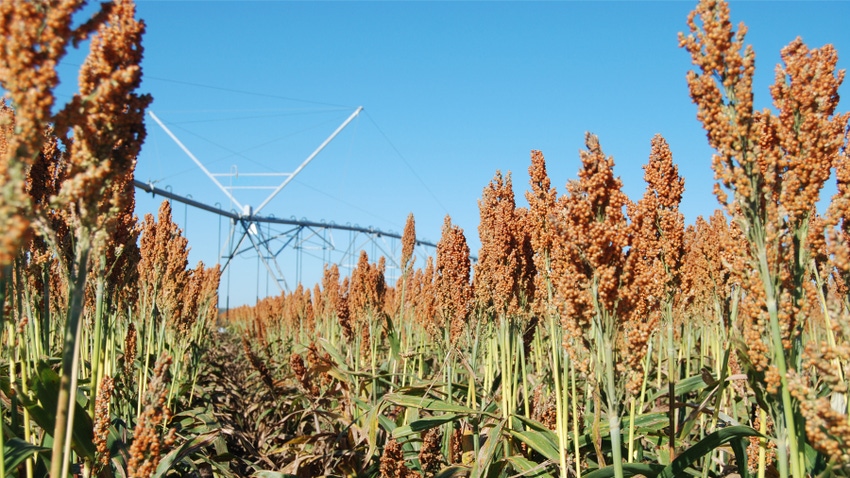January 29, 2024

The year 2023 was one for the record books in more ways than one. Many areas had record rain in May and June, followed by record drought the rest of the year.
As a result, many farmers thought they’d see record yields, but they were disappointed with historically poor yields (records all their own).
But 2023 also saw individual farmers set records, owing in large part to good stewardship. For example, David Hula of Charles City, Va., winner of multiple national corn yield contests, set another world record with a corn yield of 623.84 bushels per acre using strip tillage.
Closer to home, in Lubbock, Texas, farmer Heath Heinrich saw the highest cotton yield his fifth-generation operation has ever seen at 5.2 bales per acre on a field sharing water with corn.
Water sharing
How was a cotton yield this high possible in a year of record drought? The answer lies in that act of water sharing.
When planted about a month before cotton in the Lubbock area, a medium-early-maturity corn or sorghum hybrid will reach its peak water need well before the cotton comes under any water stress at all.
Accordingly, a double portion of water — if splitting irrigated acres evenly — can be applied to the cotton precisely when it needs it most. Practically, that means having twice the water normally available well before cotton’s peak need in August.
What does this mean for the entire field? The story of Heinrich’s experience from a few years ago echoes in my head. Stay with me because the math is confusing.
Roughly speaking, he had a 100-acre yield split evenly between sorghum and cotton. The sorghum made 125 bushels, and the cotton made 3 bales. On a net basis, this is like the entire field producing a 62.5-bushel sorghum crop and a 1.5-bale cotton crop.
Had the entire field been planted to cotton and irrigated to harvest, Heinrich estimated the yield would’ve been 1.25 bales. Think about that. As a result of sharing water, his cotton yielded higher than it would have, and he had a solid sorghum crop as a cherry on top.
Productivity and profitability
Many farmers see sustainability as a zero-sum game at best, and a net drain on both productivity and profitability at worst. However, stories like these show that paradigm doesn’t have to be true. Will it be in some cases? Absolutely. But the biggest limit to productivity is environmental stress — both biotic and abiotic — and anything that can be done to reduce such stress raises the limit.
Accordingly, any practice designed to reduce environmental stress bodes well for productivity and even profitability, as long as it doesn’t break the bank. Heinrich has proven that to be the case, as have Hula and countless other farmers in the Sorghum Belt and beyond.
As farmers look to 2024, they would do well to consider options to deploy stewardship as a tool for productivity and profitability. Whether evaluating tillage options, irrigation schedules or even seed varieties, there are myriad ways to accomplish this.
We’ll be looking to do it on our farm outside Levelland, Texas. Hopefully, many farmers reading this will join me and share their experiences.
Duff is founder of Serō Ag Strategies and serves as a consultant to National Sorghum Producers. He can be reached by email at [email protected] or on Twitter @sorghumduff.
About the Author(s)
You May Also Like






